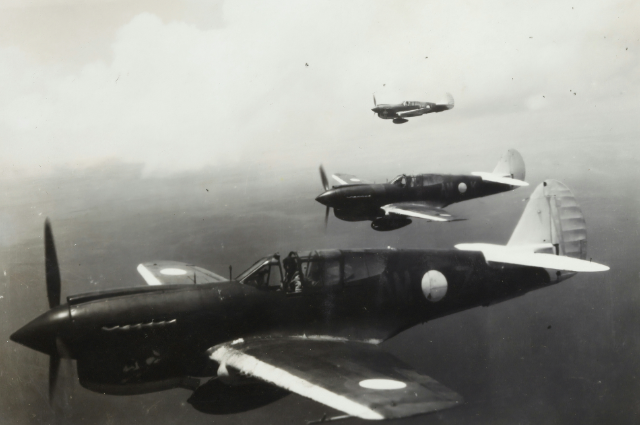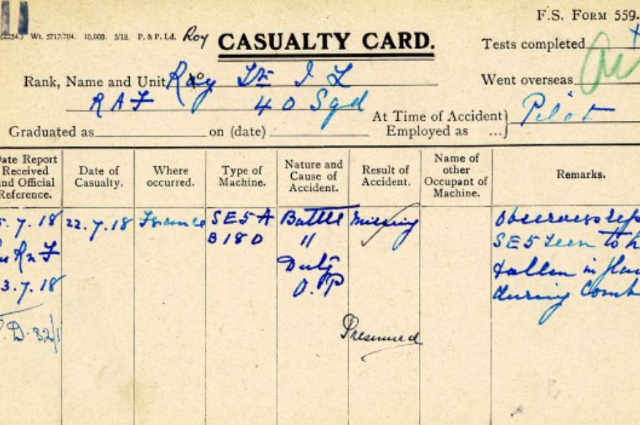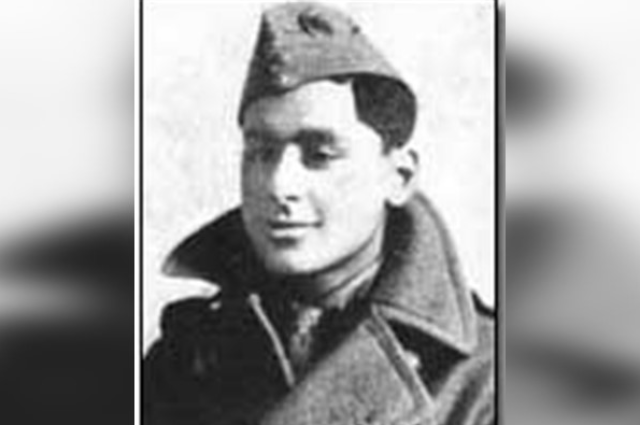
Photo by Museums Victoria on Unsplash
Almost a little more than a hundred years ago Lord Northcliffe, a controversial but influential British newspaper tycoon who had just been appointed the minister of information, went against the long-standing British policy of not recognising the war soldiers individually. His clear objective was to represent the forgotten heroes of the First World War in front of the British nation as well as the rest of the world and revise the first Great War which had been relegated to the yellow pages of people's memory, in a new light. In doing so the small group of elite fighter pilots had become celebrities in London and Paris.
Among the first fighter aces, was the name of an Indian teenager, Indra Lal Roy. He was the first Indian to be conferred with the honour of “ace fighter pilot” ( a pilot who shot down 5 or more enemy aircraft in battle). Sadly he never had the opportunity to enjoy that status and the nation of India never celebrated him.
In Calcutta, 2006, at Fort William, the armed forces observed the 88th death anniversary of the second Lieutenant Indra Lal Roy with due veneration for the first time.
In England 2018 on the centenary celebrations of the birth of the Royal Air Force, the British Broadcasting Corporation paid special mentions to a handful of Indians. Among them, a heroic fighter pilot's name was Indra Lal Roy. But who was this great soul? Dear readers, come let us embark on a journey down memory lane to those long lost days of the First World War to search and find this lion-hearted teenage Indian who had got lost in the mist of time.
Indra Lal Roy, nicknamed " Laddie" was born on December 2, 1898, in Calcutta in an affluent family of zamindars at Park Circus. His father, the barrister Piera Lal Roy was the director of public prosecutions and his mother Lolita Roy, was a well-educated lady with a progressive outlook. Born into a solvent land-owning family of Barisal, now in Bangladesh, Piera Lal Roy always had this firm belief that his children should learn the ways of the British in a much proper way since Indians had to live under British rule.
Barrister Roy's eldest son Poresh would accompany his father regularly to the High Court. They rode their carriage through the tree-lined streets in Calcutta. P. L. Roy would also take Poresh for a regular walk. A firm believer in physical fitness Piera had taught his children cycling, horse riding and swimming. A British governess had been specially appointed to groom the children in the English manners and etiquette more thoroughly. Finally, in 1901, the family moved to London with the sole intention of educating the children in the proper British way.
In London Poresh and his brothers were sent to the prestigious St. Paul's school for boys and their sisters were sent to St. Paul's School for girls. In school on one hand Poresh had been the reigning boxing champion and on the other hand his immediate junior brother Indra Lal was taking great interest in rugby and swimming, especially as the captain of the swimming team. Swimming a mile every day was a daily routine. As the dwellers of a huge house on Glazbury Road, the family was culturally inclined in Rabindra Sangeet, known as Robi Babur gaan back then and Western classical music as well. As Piera Lal Roy came back to Calcutta for professional reasons, his better half Lolita took the entire responsibility of running the household.
When the Roy family heard the news of the outbreak of the First World War at their new home in Kensington, London, the family members received it with mixed reactions. British men and women of different ages were cheering outside on the streets. The King, the Queen and the Prince of Wales were waving to the huge crowd, gathered outside the Buckingham Palace. The air was that of a street party in full swing.
But with her motherly instinct, the 49-year-old typical sari-clad mother of six Lolita got scared thinking about the on-rushing dangers in the days ahead. Interestingly it was the other way with the young souls of the family. Poresh, a fresh graduate from Cambridge and his fifteen-year-old brother Indra Lal had expressed keen interest in extending their service for the British army. “We were keen to prove that non-martial Bengalis could fight as well as many other soldiers", said Poresh Lal many years later.
On 21 December 1914, Poresh Lal Roy (1893 - 1979) joined the Reserve Battalion of the Honourable Artillery Company and signed up for overseas service immediately. After a few months of training he left for the front arriving with the 1st battalion on May, 1915, and joining the 3rd division. Only available information about Poresh Lal Roy's service record at HAC said he was injured on 24 May 1917. He remained sick for a week but had not been hospitalized. Later in his life after settling down in Calcutta, he started making Boxing a popular sports and much later he became known as " The father of Indian boxing".
Indra Lal Roy following his elder brother's footsteps had signed up at the St. Paul's school cadet force. Determined to live his dream Indra was ready to carry out his duty if the war was to continue. Mother Lolita felt pride at the gallantry of her son. She thought truly they had become true English men, loyal subjects to the King and the country. 3
At school, Indra had sent a self-designed drawing of trench mortar to the War Office with detailed notes about the machine's capacity for rapid firing. By then he had won a scholarship in Oxford by the dint of his academic records and innovative designs. But with his eyes in the stars, Laddie knew his exact place was in the cockpit of a fighter aircraft. At the first attempt, he was rejected by the military optician at the Royal Flying Corps on the grounds of ”defective" eyesight. Not to be deterred so easily Laddie sold his dearest motorbike and with that money, he consulted one of the leading eye specialists of England who gave him a medically fit certificate. At the Royal Flying Corps, the selection board were compelled to change their decision and on 4 April 1917, Indra Lal Roy joined the Royal Flying Corps and by July 5, 1917, he had been commissioned as a second lieutenant (general list). "Flight " magazine described him "as one of a band of young Indians studying here who precluded until recently of any chance of obtaining commissions in the army, found scope for striking a blow for the Empire in the new arm of our forces." Five days later he was posted to Vendome for flight training. After a stint at the Gunnery School in Turnberry, he joined No. 56 Squadron on October 30, 1917.
With an ever-smiling face and boisterous vigour, Indra Lal soon became popular among his compatriots. With his sight fixed on knocking down the German planes Roy was masterfully flying the Curtiss, the Sop - with Camel and the Avro going round and round in the skies with daring loops far beyond his age and experience. One evening over a drink in the mess, Laddie revealed his role model was the late ace British fighter pilot Captain Albert Ball whose name spelt terror for German airmen before he was killed in action.
Laddie wrote to her eldest sister Leilabati, their aerodrome was four kilometres away from the city. That was why he couldn't visit the city now and then. A few days later his training would begin. At the end of the letter it was written, “your loving brother Laddie". This letter has been kept as a precious article at the Royal Air Force Museum.
Fighting for A Flight led by Richard Mayberry over France Laddie's plane SE5A (B567) was shot down by a German fighter and crashed on no man's land on December 6, 1917. Immediately he was admitted to a local hospital where he was weak and unresponsive to such a point that he was declared dead. But Laddie regained consciousness in the morgue and started banging on the walls of the shelf he was kept inside shouting in his schoolboy French. His shouting had terrified the morgue staff so much that instead of opening the door of the shelf he started running amok calling for his colleagues. Laddie had been transferred back to Britain for better treatment. While on the path of recovery, Laddie had been busy making different sketches of aircraft designs that were quite akin to his previous passion for making sports car sketches.
Upon recovery, Indra Lal had been posted to Farnborough on 14 January 1918 but was declared not fit for flying. But the 19-year-old Bengali boy who had made a comeback from the mouth of death was not in a position to accept "no" for an answer. While watching other officers taking off on their planes, Indra would count the moments to make his way to the sky again. With the undying resilience of a teenager Indra kept pushing his officers with the persistent request of taking him back to the flying squad. At last, the officers gave in and in June 1918 Indra Lal Roy. passed the medical test and joined No. 40 Squadron returning to France as a temporary lieutenant. With his unvanquished spirit, Indra was ready to make his mark this time.
Indra Roy trained hard under the guidance of Captain George McElroy in France and became an excellent fighter. On July 6 he shot down his first German plane, a Hannover C over Arras in Northern France. Indra's dream moment came true. He was standing among his peers cheering and shouting for him. Later Indra made a beautiful drawing of that air fight.
Roy from then on had blazed a trail of glory with the next three victories in the space of four hours on 8 July by bringing down two Hannover Cs and a Fokker D VII. On the next 13 July Laddie shot down one Hannover C and a Pfalz D III. Then again on 15 July two Fokker D VIIs and one DFW CV on 18 July. On the next day, 19 July Indra Lal Roy for the last time had shot down a Hannover C over Cagnicourt. By then he had become India's first-ever flying ace ( the pilot who had shot down five or more enemy aircraft in battle) and the first-ever fighter pilot to complete 170 hours of flying time, the longest back then.
On July 22, 1918, only four months before the war ended Laddie Roy took off for a dawn patrol over the trenches in Carvin, France. Laddie's plane was immediately surrounded by four German Fokker aircraft. A tremendous air battle ensued. Laddie alone was fighting the battle of his lifetime against four fighter planes. He shot down two consecutive German planes. But suddenly his aircraft collided head-on with a German Fokker. For the last time, Indra Lal Roy was seen going down in flames over the German-held territory. Amid the wreckage and ashes of the fighter plane lay a nineteen-year-old Bengali boy who wanted to show that Bengalis were good fighters.
The news of Laddie's accident was delivered to his tearful mother in London as "missing in action". Laddie's commanding officer wrote to Lolita, “From the time he came to the squadron, his one aim of life was to shoot down the Huns and through his skill as a pilot and a wonderful dash, he succeeded in bringing down nine enemy machines. For the time he was here; he was admired by all men and officers in the squadron and was very popular in the mess." The armistice ended World War One on November 11, 1918, three weeks before Indra Lal Roy would have turned 20.
In September of 1918, the Royal Air Force officially confirmed the death of Indra Lal Roy after he was found buried at Estevelles Communal Cemetery in France. Three days later he was posthumously awarded the Distinguished Flying Cross (DFC), becoming the first Indian to receive that honour. The citation read: "A very gallant and determined officer, who in thirteen days accounted for nine enemy machines. In these several engagements, he has displayed remarkable skill and daring, on more than one occasion accounting for two machines in one patrol."

Indra Lal Roy’s Casualty Card / Imag by “South Asian Volunteers in the RAF Part One”, 21st July, 2020 By Peter Devitt: Curator in Collections Division.
The famous German flying ace Red Baron (Manfred Von Richthofen) paid respect to this Indian warrior and dropped a wreath from the sky on the exact spot where Laddie Roy fell. This famous story popped up every now and then in the media, whereas the Baron himself was killed in action on 21 April 1918, three months before Indra Lal Roy's death.
Lolita Roy later expressed that Indra "had offered his life as a sacrifice for the peace of the world and it had been accepted."
In north London at Bentley Priory Museum at the centenary celebrations of the Royal Air Force, a special tribute was paid to Indra Lal Roy for his valour. In 1998 Indian government released a commemorative stamp marking the birth centenary of Laddie Roy. In 2019 on the centenary celebrations of the First World War and especially paying tribute to the Indian soldiers' service in this Great War, the government of India released another commemorative stamp on Indra Lal Roy. Laddie Roy has remained the only Indian flying ace fighter pilot to this day.
Indra Lal Roy's grave in France bears an inscription in French and Bengali. The Bengali words read:
"Maha birer samadhi; sambhram dekhao, sparsha koro na." (A valiant warrior's grave; respect it, do not touch it).

